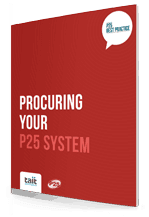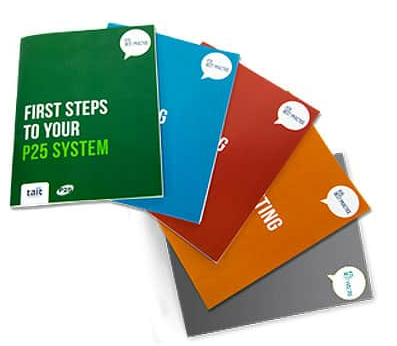The next in our series of Free Guides: in this issue, we take a look at the Procuring your P25 System. This is an important process, which is worth reviewing to ensure you receive maximum results.
What is the best way to procure your new P25 System? Buyers face several crucial choices when purchasing mission critical comms systems. With making such a large investment in communications infrastructure, you want to make sure that your teams stay connected, at the same time ensuring that the technology fits the needs of your organization.
There are several requests that can be made at different levels along the procurement process. Request for information, Request for Bid/Quote, and Request for Proposal.
Request For Information (RFI)
Some agencies require an RFI as the first step in procuring a p25 system. This early stage is used to narrow down technology choices with short details and brief scenarios in which the technology will be used. This stage is known as the ‘technology evaluation stage’ and this can at times include early budgetary pricing alongside the early decision making of the technology your agency may use.
There are two reasons for using an RFI
- Correctly assess what P25 technologies may be right for your needs
- You need detailed information about available solutions
Request for Bid/Quote (RFB/RFQ)
Typically used when the specifications are so detailed that the issuing agency is confident the outcome can be decided solely on price. This process requires significant work in preparing the procurement document, but allows no room for alternative interpretation of your agencies requirements.
- This process is only used when you know exactly what you want, and you are confident in the procurement document to communicate exactly what your agency requires.
Request for Proposal (RFP)
The most common the the three procurement processes, it provides a high level of system design detail but leaves no room for vendor creativity. It often requires less work up front. It provides the buyer some flexibility in evaluating and selecting the vendor.
- Use this approach, but define your evaluation criteria clearly for internal purposes before the document is released.

One of the first questions is whether to buy the system together with subscriber equipment or have two separate competitive processes. There are pros and cons for both of these approaches.
It’s comforting to give sole responsibility to one vendor, however the list of user equipment vendors is vast, sometimes the increased competition among subscriber unit vendors can yield 30-40% on average cost savings.
Financing
Financing is equally important as requests, although in a different decision making category is the form of purchase you choose; capital purchase, lease, or long-term managed services contract. None of these approaches are entirely new but offer additional flexibility.
Capital Purchase
Pay for the system up-front, typically in implementation mile-stone based instalments. Negotiate post-implementation maintenance separately. You own the equipment.
Lease
Make pre-agreed periodic instalment payments. Lease terms will typically include some maintenance and may include upgrades. You will not build equity in the equipment. This approach is selected for financial reasons, the level of commitment is similar to capital purchase and breaking the lease is often difficult.
Long-term Managed Services Contract
Make pre-agreed periodic instalments payments. You may be building equity in the equipment and own it at the end of the term, depending on your contract. The contract should include maintenance and upgrades. The main advantage of this approach is handing over the responsibility for maintaining the system, in some cases including all hardware and software upgrades, to the vendor.
Download your Free Guide 
This is but a brief explanation of Procuring your P25 System, the full version of this resource is available for free. Download your copy today.
 Download the full suite of P25 Best Practice guides.
Download the full suite of P25 Best Practice guides.
Learn more about P25 Best Practice.




